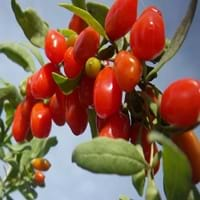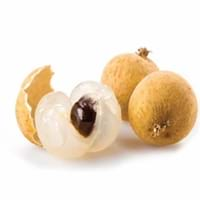Health Benefits
Anti-oxidant properties, Eye care, Helps in cartilage regeneration, Regulates Blood Sugar, Treatment of osteoarthritis
Anti depressant, Anti-inflammatory properties, Healthy mucus membrane, prevents oral cavity cancer, Prevents anemia, Prevents cases of morning sickness, Prevents lung cancer, Skin rejuvenation, Treatment of colonic diseases
General Benefits
Boosts immune system, Digestive aid
Anti oxidant properties, Anti-inflammatory properties, Digestive aid, Gives you energy, Suppresses Arthritis
Skin Benefits
Anti-aging benefits, Reduces wrinkles, Treatment of skin diseases
Reduces wrinkles, Skin rejuvenation
Hair Benefits
Protects hair, Regulates hair growth
Not Available
Allergy Symptoms
Anaphylaxis, Itching, Sneezing, Wheezing
Itching, Swelling of mouth, tongue or lips, Tingling sensation in mouth
Side Effects
May interact with some drugs
Mouth irritation, Weight gain
Best Time to Eat
Any time except an hour after meal, Don't consume at night and before bed
As a snack in the late afternoon
Vitamin B5 (Pantothenic Acid)
Vitamin C (Ascorbic Acid)
Vitamin E (Tocopherole)
Not Available
Vitamin K (Phyllochinone)
Not Available
Lutein+Zeaxanthin
Not Available
Phytosterol
Not Available
Calories in Fresh Fruit with Peel
Calories in Fresh Fruit without Peel
Not Available
Not Available
Calories in Frozen Form
Not Available
Calories in Dried Form
Not Available
Calories in Canned Form
Not Available
Not Available
Calories in Jam
Not Available
Type
Berry
Tree fruit, Tropical
Season
Autumn
Mid to late summer
Varieties
No Types
Chompoo Longan, Kohala Seedling, Haew, Edau and Biew Kiew
Seedless Variety
No
Not Available
Color
Scarlet red
Rusty brown
Inside Color
Orange
Yellowish brown
Taste
Slightly bitter, Tart
Sweetish
Soil Type
Well-drained
Well-drained
Climatic Conditions
Cold, Hot
Sunny, Warm, Without frosts
Facts about
- Study says a man named Li Qing Yuen used to eat goji berries daily and lived for 252 years.
- They are also known as wolfberries in India & China.
- This fruit is used for spiritual purposes at many places.
- Longan is also called as "Dragon's eye" in China as it gives an impression of an eyeball.
- Longan seeds can be used to absorb the venom after the snake bite and they also help to stop bleeding.
Top Producer
China
Thailand
Other Countries
Canada, France, India, United States of America
Australia, Combodia, Taiwan, United States of America, Vietnam
Top Importer
United States of America
China
Top Exporter
China
Thailand
Botanical Name
Lycium barbarum
Dimocarpus longan
Synonym
Wolfberry
Dragon eye
Subkingdom
Tracheobionta
Viridiplantae
Division
Unknown
Tracheophyta
Class
Unknown
Magnoliopsida
Subclass
Asteridae
Rosidae
Order
Solanales
Sapindales
Family
Solanaceae
Sapindaceae
Species
L. barbarum
D. longan
Generic Group
Not Available
Not Available
Difference Between Gojiberry and Longan
We might think that Gojiberry and Longan are similar with respect to nutritional value and health benefits. But the nutrient content of both fruits is different. Gojiberry and Longan Facts such as their taste, shape, color, and size are also distinct. The difference between Gojiberry and Longan is explained here.
The amount of calories in 100 gm of fresh Gojiberry and Longan with peel is 32.00 kcal and 83.00 kcal and the amount of calories without peel is Not Available and Not Available respectively. Thus, Gojiberry and Longan belong to Low Calorie Fruits and Low Calorie Fruits category.These fruits might or might not differ with respect to their scientific classification. The order of Gojiberry and Longan is Solanales and Sapindales respectively. Gojiberry belongs to Solanaceae family and Longan belongs to Sapindaceae family. Gojiberry belongs to Lycium genus of L. barbarum species and Longan belongs to Dimocarpus genus of D. longan species. Beings plants, both fruits belong to Plantae Kingdom.









